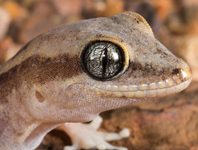Abstract
The species of the genus Centroctenus can be distinguished from other Ctenidae genera by the presence of a long tibiae and the absence of a retrolateral projection of the cymbium in the male palp, and by the presence of a rounded spermathecae in the female epigynum. The composition of this spider genus is herein expanded to eleven Neotropical species, with the description of six new species: Centroctenus dourados sp. n., C. claudia sp. n., C. chalkidisi sp. n., and C. varzea sp. n., from Brazil; and Centroctenus coloso sp. n. from Colombia and Centroctenus alinahui sp. n. from Ecuador. A map with the distribution of all known species in the genus is presented.
References
Álvarez-Padilla, F. & Hormiga, G. (2007) A protocol for digesting internal soft tissues and mounting spiders for scanning electron microscopy. Journal of Arachnology, 35, 538–542.
https://doi.org/10.1636/Sh06-55.1
Brescovit, A.D. (1996) Revisão do gênero Centroctenus Mello-Leitão (Araneae, Ctenidae, Cteninae). Revista Brasileira de Entomologia, 40, 301–313.
Brazão, J.E.M. & Santos, M.M. (1997) Recursos naturais e meio-ambiente: uma visão do Brasil. IBGE, Rio de Janeiro, 208 pp.
Caporiacco, L. di (1954) Araignées de la Guyane Française du Muséum d’Histoire Naturelle de Paris. Commentationes Pontificia Academia Scientiarum, 16, 45−193.
Dias, S.C., Carvalho, L.S., Bonaldo, A.B. & Brescovit, A.D. (2010) Refining the establishment of guilds in Neotropical spiders (Arachnida: Araneae). Journal of Natural History, 44, 3–4.
https://doi.org/10.1080/00222930903383503
Hernández, J., Hurtado, A., Ortiz, R. & Walschburger, T. (1992) Unidades biogeográficas de Colombia. In: Halffter, G. (Ed.), La diversidad biológica de Iberoamérica. Acta Zoológica Mexicana. Volumen Especial 1992, Cyted –D. Programa Iberoamericano de Ciencia y Tecnología para el Desarrollo, Instituto de Ecología, A.C., Xalapa, pp. 105–151.
Hijmans, R.J., Guarino, L., Cruz, M. & Rojas, E. (2001) Computer tools for spatial analysis of plant genetic resources data: 1. DIVA-GIS. Plant Genetic Resources Newsletter, 127, 15–19.
Höfer, H. & Brescovit, A.D. (2001) Species and guild structure of a Neotropical spider assemblage (Araneae) from Reserva Ducke, Amazonas, Brazil. Andrias, 15, 99–119.
Keyserling, E. (1877) Ueber amerikanische Spinnenarten der Unterordnung Citigradae. Verhandlungen der Kaiserlich-Königlichen Zoologisch-Botanischen Gesellschaft in Wien, 26, 609−708.
Levi, H.W. (1965) Techniques for the study of spider genitalia. Psyche, 72, 152–158.
https://doi.org/10.1155/1965/94978
Mello-Leitão, C.F. de (1929) Aranhas do Pernambuco, colhidas por D. Bento Pickel. Anais da Academia Brasileira de Ciências, 1, 91–112.
Pickard-Cambridge, F.O. (1897) On cteniform spiders from the lower Amazons and other regions of North and South America, with a list of all known species of these groups hitherto recorded from the New World. Annals and Magazine of Natural History, 19, 52−106.
https://doi.org/10.1080/00222939708680507
Pizano, C. & García, H. (2014) El Bosque Seco Tropical en Colombia. Instituto de Investigación de Recursos Biológicos Alexander von Humboldt (IAvH), Bogotá, 213 pp.
Polotow, D. & Brescovit, A.D. (2009) Revision and cladistic analysis of Isoctenus and description of a new Neotropical genus (Araneae, Ctenidae, Cteninae). Zoological Journal of the Linnean Society, 155, 583–614.
https://doi.org/10.1111/j.1096-3642.2008.00452.x
Polotow, D. & Brescovit, A.D. (2014) Phylogenetic analysis of the tropical wolf spider subfamily Cteninae (Arachnida, Araneae, Ctenidae). Zoological Journal of the Linnean Society, 170, 333–361.
https://doi.org/10.1111/zoj.12101
Polotow, D. & Brescovit, A.D. (2019) Guasuctenus gen. nov., a new Neotropical spider genus of Ctenidae (Araneae). Zootaxa, 4624 (4), 539–550.
https://doi.org/10.11646/zootaxa.4624.4.6
Rego, F.N.A.A, Venticinque, E.M., Brescovit, A.D., Rheims, C. & Albernaz, A.L.K.M. (2009) A contribution to the knowledge of the spider fauna (Arachnida: Araneae) of the floodplain forests of the main Amazon River channel. Revista Ibérica de Aracnología, 17, 85–96.
Simó, M. & Brescovit, A.D. (2001) Revision and cladistic analysis of the Neotropical spider genus Phoneutria Perty, 1833 (Araneae, Ctenidae), with notes on related Ctenidae. Bulletin of the British Arachnological Society, 12, 67–82.
Strand, E. (1909) Neue oder wenig bekannte neotropische cteniforme Spinnen des Berliner Museums. Zoologische Jahrbücher, Abteilung für Systematik, Geographie und Biologie der Tiere, 28, 401−428.
World Spider Catalog (2020) World Spider Catalog. Version 21.0. Natural History Museum Bern, Bern. Available from: http://wsc.nmbe.ch (accessed 30 March 2020)


